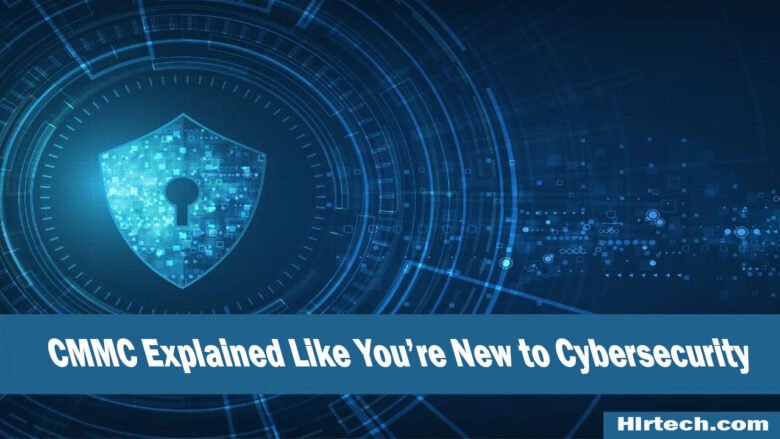You wouldn’t try to fix a submarine engine without some instructions—so why jump into a Department of Defense contract without understanding how to protect the sensitive data that comes with it? If you’re hearing the term “CMMC” and wondering what it means, you’re in the right place. Let’s break this down in plain English and make sense of something that might otherwise sound like government-speak.
CMMC Basics You Need for Your First DoD Contract
The Cybersecurity Maturity Model Certification (CMMC) is not just a checklist; it’s your entry ticket to work on Department of Defense projects. If your business is handling any information tied to a DoD contract—like designing parts, offering software, or handling logistics—you’re going to need to prove you can protect that data. CMMC is the framework that shows you take that responsibility seriously, especially when dealing with Controlled Unclassified Information (CUI). It’s not optional anymore—CMMC is fast becoming a mandatory part of the bidding process.
You don’t need to be a tech expert to meet the requirements, but you do need a plan. At the most basic level, you’ll need to identify the kind of data you touch, understand where it lives in your systems, and make sure only the right people have access. Whether you’re a small business or a prime contractor, CMMC will assess your cybersecurity practices and assign you a level that reflects how securely you handle information. And yes—third-party assessments are required at certain levels, so don’t wait until the last minute.
Simple Steps to Understanding Cybersecurity Maturity Levels
Think of CMMC levels like karate belts for your cybersecurity practices—each one represents your skills and discipline in protecting information. Level 1 is for basic hygiene, like having passwords and antivirus software. It gets more intense from there, moving toward full-blown security operations centers, incident response plans, and encrypted communications. There are five levels total, and each one builds on the last.
Here’s a secret: most contractors only need to meet Level 1 or 2. But don’t let that fool you into underestimating the effort involved. Even Level 1 asks for 17 practices that have to be implemented and documented. Level 3 and above? You’ll need formal policies, proof of training, and evidence that you’re following processes consistently. It’s less about having expensive tools and more about having reliable procedures—and showing you actually follow them.
Key Cyber Terms Every Beginner Should Know About CMMC
Let’s demystify a few buzzwords. First up: FAR and DFARS. These are federal regulations that tell you what’s expected from contractors. FAR 52.204-21 ties into Level 1 of CMMC, while DFARS 252.204-7012 kicks things up for higher levels involving CUI. Then there’s POAM—Plan of Action and Milestones—which is basically your to-do list of security gaps and how you’ll fix them. You won’t always be expected to be perfect, but you are expected to have a plan.
Another must-know is NIST 800-171. This is the technical bible behind the higher CMMC levels. If you’re aiming for Level 2 or above, you’ll be aligning closely with this standard. Understanding these terms early saves time later when you’re in conversations with assessors or compliance teams. It’s not about memorizing acronyms—it’s about knowing what they mean for your day-to-day operations.
The Easy Way to Grasp Controlled Unclassified Information (CUI)
CUI isn’t just random company data—it’s sensitive information that isn’t classified, but still important to national security. Think of things like technical drawings, internal manuals, or even maintenance schedules. It may not be top secret, but it needs to be protected from hackers, foreign adversaries, or even accidental leaks. And if your company handles CUI, you’re going to need more than basic protections.
So how do you know if you’re touching CUI? The government usually marks it, but sometimes it’s buried in the details of your contract. Ask your prime contractor or contract officer—they’re your best bet for clarification. Once you identify it, your systems must keep it encrypted, access-controlled, and auditable. This is the core of CMMC Level 2 and above, so understanding what counts as CUI will guide your entire compliance approach.
Beginner-Friendly Overview of the Five CMMC Levels
Level 1 is all about foundational practices—think firewalls, antivirus software, and access control. It’s the minimum bar for protecting federal contract information. Level 2 is the transition stage toward more formal cybersecurity. It mirrors parts of NIST 800-171 and sets the stage for Level 3, which is the most common target for companies managing CUI.
Level 3 is where things get serious. Policies, procedures, training, and response capabilities are all expected. Level 4 and Level 5 are advanced and typically reserved for organizations involved in critical defense programs. They require proactive security measures and near real-time threat detection. For most companies, aiming between Level 1 and 3 is realistic and relevant—but every level counts.
Common Mistakes to Avoid When Approaching CMMC for the First Time
Jumping straight into technical solutions without understanding the requirements is a common trap. You might buy a fancy tool or hire an IT vendor and still miss key practices because you didn’t map them to the actual CMMC levels. Start by assessing your current environment—where your data is, who accesses it, and how it’s protected. A gap analysis is your best friend here.
Another mistake is thinking it’s a one-time process. CMMC isn’t something you do once and forget about—it’s ongoing. Your policies, training, and access controls must stay updated, especially as the threat landscape evolves. And documentation is key. If you can’t prove it, it didn’t happen, at least in the eyes of a CMMC assessor. Preparation today saves you from panic tomorrow.
Clear Examples of CMMC Compliance in Daily Defense Contracting
Imagine a small defense contractor who builds components for naval ships. They use email to share engineering files with their team. CMMC Level 1 means ensuring that email is encrypted and only accessible to those who need it. They also make sure work laptops are password-protected, updated regularly, and physically secured when not in use.
Or think of a mid-sized company working on satellite parts. They handle CUI daily and need Level 2 or Level 3 compliance. They implement role-based access so only engineers can access design blueprints. They’ve trained staff on phishing attacks and documented an incident response plan. Their systems track who logs in, when, and what changes are made. That’s what real CMMC compliance looks like—it’s not just policies, it’s living practices baked into everyday workflows.



